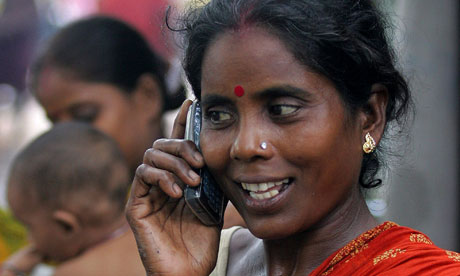There are lots of positive aspects that we ought to recognize--like the increase in literacy rates, decrease in the population growth rate itself, etc. Population growth rate slowing down will certainly help the economic growth rate ...
"Reducing the growth rate is our objective. What we already have is a large youth population without enough schools or jobs for them," said Abusaleh Shariff, chief economist at the National Council for Applied Economic Research .But, there is a worrisome trend, as the following chart shows:
"It (the decline) reflects the desire of even poor people to educate their children and for a better life. They know that having too many children will be counter-productive," he said.
Just a tad of a good news even amidst this serious drop in fifty years ...
The states that had the worst sex ratios in the last census—Punjab and Haryana—and which have been the focus of the anti-female-feticide work of social work groups, showed somewhat improved sex ratios, although they were still very low.Mirror, mirror, mirror on the wall, which was the worst one of all?
Gujarat, Himachal Pradesh, Mizoram, Tamil Nadu and the Andaman and Nicobar federal territory also did not post a worsening of the child sex ratio. But most others states and union territories of India have shown a decline in the child sex ratio since the 2001 census.
Delhi has recorded the lowest sex ratio, 866, according to the early results of the 2011 national census released by the registrar general and census commissioner C Chandramauli on Thursday.The slightly better data then reflects in society:
The good news is that the overall sex ratio of the country has increased from 933 in the 2001 census to 940 in the 2010 census. While the sex ratio is still bad in Jammu and Kashmir, Punjab and Haryana, it has improved in most Indian states.Despite attempts to glean any positive stories, the data ought to worry us. But, this is not anything new either; twenty years ago, I read about it in a piece that Amartya Sen wrote about the 100 million missing women, though not all in India:
In view of the enormity of the problems of women’s survival in large parts of Asia and Africa, it is surprising that these disadvantages have received such inadequate attention. The numbers of “missing women” in relation to the numbers that could be expected if men and women received similar care in health, medicine, and nutrition, are remarkably large. A great many more than a hundred million women are simply not there because women are neglected compared with men. If this situation is to be corrected by political action and public policy, the reasons why there are so many “missing” women must first be better understood. We confront here what is clearly one of the more momentous, and neglected, problems facing the world today.Sen pointed out then that Kerala is very different from the rest of India in this regard, and it continues to be a positive outlier even according to the latest census:
Kerala with 1084 has the highest sex ratio followed by Puducherry with 1038,For a comparison, the following are the data for the United States:
- at birth: 1.048 male(s)/female
- under 15 years: 1.04 male(s)/female
- 15-64 years: 1 male(s)/female
- 65 years and over: 0.75 male(s)/female
- total population: 0.97 male(s)/female (2010 est.)
The picture on the right is from this news story that reports on an Indian village ruling that unmarried women cannot use cell phones :(


No comments:
Post a Comment